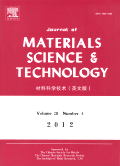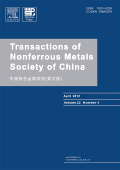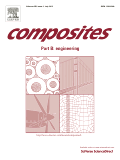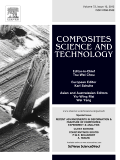
COMPOSITE STRUCTURES
Scope & Guideline
Elevating Research Standards in Composite Structures
Introduction
Aims and Scopes
- Mechanical Properties of Composites:
The journal extensively publishes research on the mechanical properties of composite materials, including tensile, compressive, and shear strengths, as well as fatigue resistance and impact behavior. - Damage Mechanisms and Failure Analysis:
A key focus is on understanding the damage mechanisms in composite structures, including delamination, fatigue, and impact damage, often using advanced techniques like acoustic emission and digital image correlation. - Multiscale Modeling and Simulation:
Research articles often employ multiscale modeling approaches to predict the behavior of composites at different scales, from microstructural analysis to macroscopic performance. - Innovative Manufacturing Techniques:
The journal covers novel manufacturing processes for composite materials, including additive manufacturing, automated fiber placement, and advanced curing techniques. - Applications of Composites in Engineering:
There is a strong emphasis on the application of composite materials in various engineering fields, such as aerospace, civil engineering, and automotive, focusing on their structural performance and sustainability. - Smart and Multifunctional Composites:
Research on smart composites that integrate sensors, actuators, or other functionalities is increasingly prevalent, highlighting their potential in advanced engineering applications.
Trending and Emerging
- Functionally Graded Materials (FGMs):
There is a notable increase in research focusing on functionally graded materials, which allow for tailored mechanical properties and enhanced performance in applications such as aerospace and automotive. - Smart and Responsive Composites:
The development of smart composites that respond to environmental stimuli or integrate sensing capabilities is on the rise, reflecting advancements in material science and engineering. - Hybrid Composite Systems:
Research on hybrid composites, which combine different materials to achieve improved properties, is increasingly popular, especially in high-performance applications. - Sustainability and Recycling in Composites:
Emerging research themes include the sustainability of composite materials and recycling processes, addressing environmental concerns and the lifecycle impacts of composites. - Advanced Numerical Methods and Machine Learning:
The application of machine learning and advanced numerical methods for predicting composite behavior and optimizing designs is gaining traction, showcasing the intersection of AI and materials science. - Multiscale and Multifunctional Design:
Increasingly, research is focusing on multiscale modeling approaches that consider various scales of material behavior and multifunctional design to enhance the utility and performance of composites.
Declining or Waning
- Traditional Composite Materials:
Research focused on conventional composite materials, such as glass or carbon fiber reinforced polymers, has seen a decline as newer materials and hybrid systems gain traction. - Basic Mechanical Testing:
The emphasis on basic mechanical testing methods has decreased, with more studies moving towards advanced simulation techniques and real-world applicability. - Static Analysis of Composite Structures:
Static analysis topics are being overshadowed by dynamic and impact studies, reflecting a growing interest in understanding the behavior of composites under real-world loading conditions. - Single-Scale Modeling Approaches:
The use of single-scale models is diminishing as researchers increasingly adopt multiscale approaches that provide more comprehensive insights into composite behavior.
Similar Journals

ACI STRUCTURAL JOURNAL
Shaping the Landscape of Civil Engineering with Impactful ResearchThe ACI Structural Journal, published by the American Concrete Institute, serves as a premier platform for scholarly articles and research findings in the fields of building and construction and civil and structural engineering. With a commitment to advancing concrete technology and its applications, this journal has amassed an impressive reputation, holding a Q2 ranking in both Building and Construction and Civil and Structural Engineering categories as of 2023. The journal’s focus on innovative research and practical applications enables professionals, researchers, and students to stay at the forefront of industry developments. Although it does not offer open access, the content bears significant impact, ensuring that readers engage with high-quality research. As the journal converges its years of publication from 1987 to 2024, it continues to enrich the academic and professional discussions surrounding structural engineering and concrete science.

Composites and Advanced Materials
Advancing the Future of Material ScienceComposites and Advanced Materials, published by SAGE Publications Ltd, is a pioneering open access journal launched in 2021 that provides a dedicated platform for disseminating cutting-edge research in the field of composite materials and their advanced applications. With a growing global emphasis on sustainability and technology innovation, this journal serves as an essential resource for researchers, professionals, and students keen to explore the latest advancements in material science. Featuring rigorous peer-reviewed articles, the journal not only aims to enhance the scientific dialogue around composite materials but also facilitates the exchange of ideas that propel the field forward. The journal is easily accessible, catering to a wide audience interested in the future of materials engineering, and it strives to uphold its mission of fostering collaborative research and dialogue across disciplines.

MATERIALS AND STRUCTURES
Shaping the Future of Sustainable Construction PracticesMATERIALS AND STRUCTURES, published by SPRINGER, is a prestigious peer-reviewed journal dedicated to advancing the fields of building and construction, civil and structural engineering, and materials science. With an impressive impact factor and a notable Q1 ranking across multiple categories in the 2023 Journal Citation Reports, including Mechanics of Materials, this journal stands as a vital resource for researchers and professionals seeking to disseminate and access high-quality research. Established in 1985, it has continually evolved, showcasing revolutionary research and emerging technologies in material engineering. The journal provides a platform for innovative ideas and methodologies, contributing significantly to the body of knowledge essential for the advancement of sustainable construction practices. Although it does not currently offer Open Access options, the rigorous peer review process ensures the integrity and relevance of its publications, cementing its role as a leading journal in its field. Researchers, industry experts, and students alike will find invaluable insights within its pages, making MATERIALS AND STRUCTURES an essential read for anyone involved in engineering and materials research.

Journal of Materials Science & Technology
Transforming Ideas into Advanced Material SolutionsThe Journal of Materials Science & Technology, published by JOURNAL MATER SCI TECHNOL in China, is a leading forum for the latest research in the multidisciplinary field of materials science. With the ISSN 1005-0302 and E-ISSN 1941-1162, this esteemed journal boasts an impressive impact factor and has established itself as a vital resource for professionals, researchers, and students alike. Covering a wide range of topics, including ceramics, composites, materials chemistry, mechanical engineering, and polymers, it has achieved a coveted Q1 ranking in multiple categories as of 2023, reflecting its position in the top tier of scholarly publications. Notably, the journal excels in its Scopus ranks, placing within the top 5% in categories such as Metals and Alloys and Mechanical Engineering. Aiming to foster knowledge and innovation in material development and application, the journal is committed to facilitating groundbreaking research and collaborations that propel the field forward. With its convergence of insights from 1993 to 2025, the Journal of Materials Science & Technology remains an indispensable resource for the advancement of materials science.

Journal of Composites Science
Unleashing Potential Through Open Access ResearchThe Journal of Composites Science, published by MDPI, is a premier Open Access journal dedicated to advancing the field of composites and materials science. Launched in 2017, this innovative journal provides a platform for researchers, professionals, and students to share findings, methodologies, and insights related to composites, ceramics, and engineering applications. With an impressive Q2 ranking in both the Ceramics and Composites and Engineering (miscellaneous) categories for 2023, the journal is well-positioned within the academic community, ranking 48th out of 204 in miscellaneous engineering and 47th out of 127 in ceramics and composites according to Scopus. The journal's open-access model ensures that high-quality research is widely available to the scientific community, fostering collaboration and innovation. Situated in defensive Switzerland at ST ALBAN-ANLAGE 66, CH-4052 BASEL, the Journal of Composites Science is an essential resource for those seeking to stay at the forefront of the composites domain and drive progress in engineering practices.

TRANSACTIONS OF NONFERROUS METALS SOCIETY OF CHINA
Connecting professionals with cutting-edge research in metallurgy.TRANSACTIONS OF NONFERROUS METALS SOCIETY OF CHINA, published by Elsevier, is a premier academic journal that serves as a vital platform for researchers and professionals specializing in materials science, condensed matter physics, geotechnical engineering, and engineering geology. Established in 1994, this esteemed publication has maintained a robust focus on the latest developments in the nonferrous metals sector, reflecting its significant impact in the field with a Q1 categorization across multiple disciplines. With impressive Scopus rankings—placing it in the top 20% of journals in relevant categories—this journal is recognized for its quality and rigor, providing critical insights into metals and alloys, materials chemistry, and their applications. The non-open access format ensures a dedicated readership among professionals and academics seeking substantial and authoritative research articles. By fostering knowledge exchange, the journal strives to advance the understanding and application of nonferrous metals, making it an essential resource for anyone involved in material innovations and engineering solutions.

SAMPE JOURNAL
Championing Rigor and Depth in Materials Science ResearchSAMPE JOURNAL, published by SAMPE PUBLISHERS, has served as a pivotal source of knowledge and innovation in the field of engineering and materials science since its inception in 1969. This peer-reviewed journal is dedicated to advancing the science and application of materials and manufacturing processes, catering to the interests of researchers, professionals, and students alike. Although it does not currently offer open access options, its articles are renowned for their depth and rigor, contributing significantly to the ongoing discourse in Mechanical Engineering, General Materials Science, and Mechanics of Materials. With Scopus rankings placing it in the 38th percentile for Mechanical Engineering and 37th for General Materials Science, SAMPE JOURNAL continues to be an essential resource for those striving for excellence in their respective fields. For those invested in pioneering research and innovations, this journal remains a reliable and respected platform for publication and dissemination of knowledge.

COMPOSITES PART B-ENGINEERING
Fostering Innovation in Engineering and Material ApplicationsCOMPOSITES PART B-ENGINEERING, published by Elsevier Science Ltd, stands at the forefront of research in the fields of engineering and materials science, specifically targeting the domains of composites, ceramics, and mechanical engineering. With an impressive impact factor and categorized in the prestigious Q1 quartiles across multiple categories including Industrial and Manufacturing Engineering and Mechanics of Materials, this journal fosters innovative research that significantly contributes to the advancement of composite materials and their applications. The journal has been diligently publishing high-quality peer-reviewed articles since its inception in 1996, and it continues to attract top-tier contributors and researchers who are dedicated to exploring emergent technologies and methodologies. Researchers, professionals, and students will find valuable insights and an extensive pool of resources in this essential journal, available through Open Access options that enhance its visibility and reach, allowing the dissemination of crucial knowledge to the global scientific community.

ADVANCED COMPOSITE MATERIALS
Innovating the Future of Materials ScienceADVANCED COMPOSITE MATERIALS, published by Taylor & Francis Ltd, is a leading peer-reviewed journal in the field of materials science, specifically focusing on the innovative development and applications of composite materials. With an ISSN of 0924-3046 and E-ISSN 1568-5519, this journal serves as a vital resource for researchers and professionals worldwide, examining cutting-edge advancements and methodologies in composites, ceramics, and mechanical engineering. Having secured a solid standing in the academic community, it boasts impressive Scopus rankings, such as #185 in Mechanical Engineering with a 72nd percentile and #46 in Ceramics and Composites, emphasizing its relevance and rigor. Although not an open-access publication, its insights are invaluable for those looking to explore, contribute to, and stay abreast of the latest breakthroughs in the field from 1991 through 2024. By targeting critical areas within mechanics and material sciences, the journal continues to foster innovation and scholarly discussion, making it an essential venue for specialists striving to advance the capabilities and applications of composite materials.

COMPOSITES SCIENCE AND TECHNOLOGY
Transforming Ideas into Advanced Composite ApplicationsComposites Science and Technology, a premier journal published by Elsevier Sci Ltd, serves as a vital resource in the fields of composite materials and engineering. With an impressive 2023 impact factor reflecting its influential contributions, this journal has established itself within the top tier of academic publishing, flaunting a Q1 ranking in both the Ceramics and Composites and Engineering (Miscellaneous) categories. Covering a diverse range of topics from the development of novel composite materials to their practical applications across various industries, it is recognized for its rigorous peer-review process and high-quality research outputs. As reflected in its Scopus rankings, Composites Science and Technology places in the 97th percentile among general engineering journals and the 94th percentile amongst ceramics and composites science literature. Researchers and professionals alike benefit from its comprehensive access to cutting-edge discoveries and advancements, making it an indispensable tool for driving innovation within this dynamic field.